Submitted by WA Contents
Carmody Groarke completes gallery that features brick vaulted ceilings and back-lit panels
United Kingdom Architecture News - Apr 01, 2021 - 09:50 6568 views
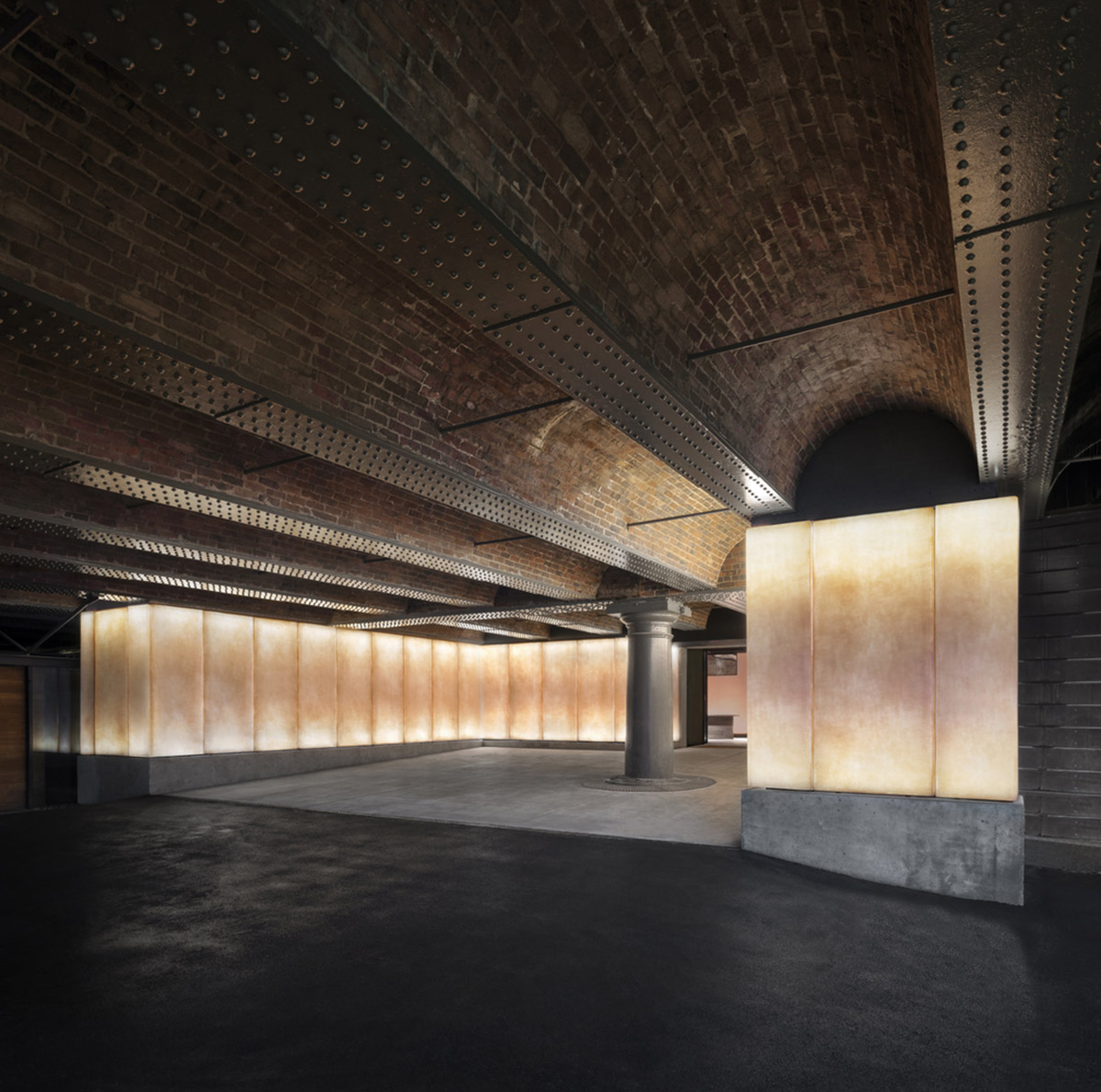
London-based architecture studio Carmody Groarke has converted an old warehouse into an exhibition gallery with brick vaulted ceilings with fibre-glass panelled walls featuring back-lit in Manchester in the United Kingdom.
The project, named New Special Exhibitions Gallery, was realized as part of the first phase of the Science And Industry Museum's masterplan for the historic site in Manchester.
The museum's historic structure is the world's oldest railway station complex which is also known as Manchester Liverpool Road.

Covering a total of 1,200-square-metre area provides an open space for temporary exhibitions, the new architectural space combines the railway's vaulted arches, 5m-high vaulted ceilings with modern touches.
The new gallery is located on the lower ground floor of the New Warehouse, which is a Grade II listed structure, dating back to the 1880s.
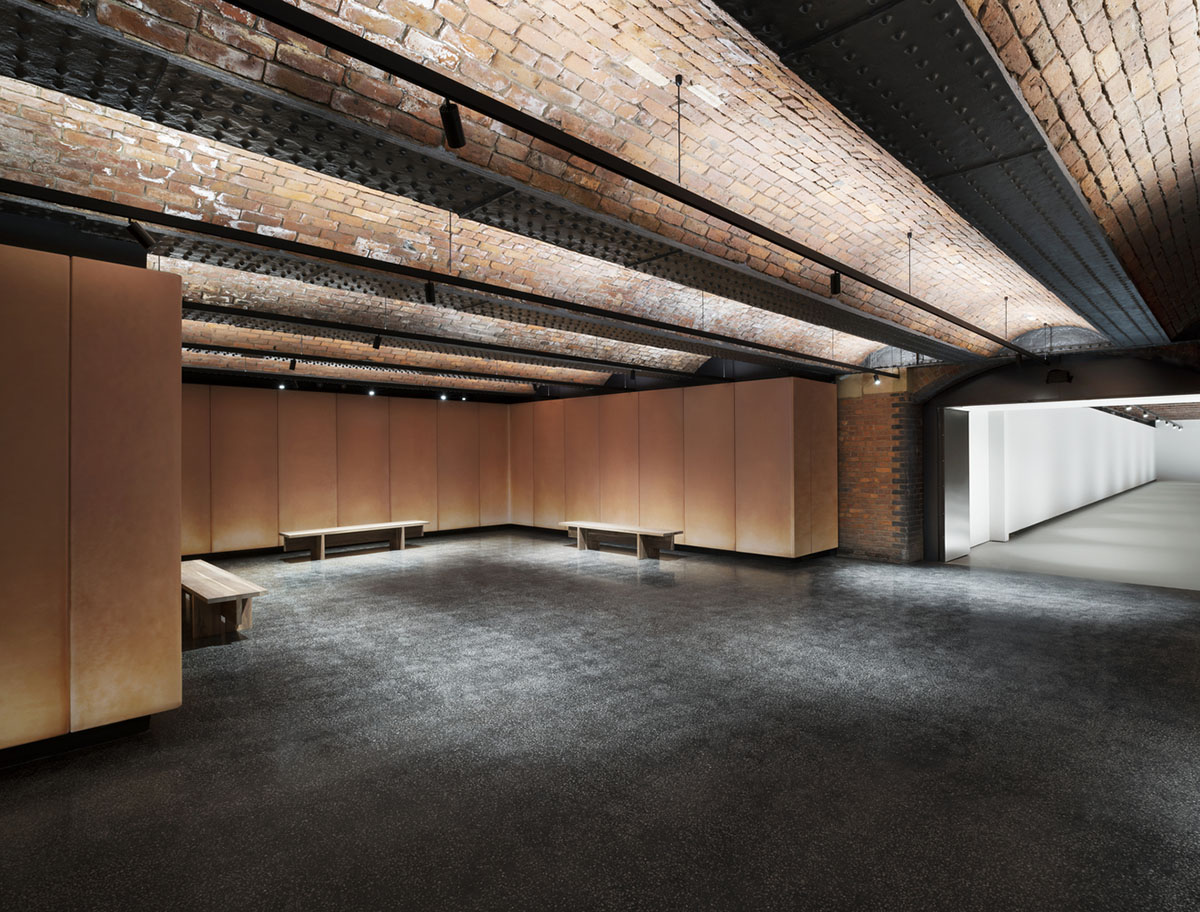
"In the coming years, the museum aims to create stronger site-wide orientation and access between the existing historic buildings and spaces and its network of Victorian railway viaducts," said Carmody Groarke.
Creating a new visitor route, the new gallery space links the Lower Yard with the busiest levels of the museum above. The space also opens-up public access as a gallery space to this part of the museum’s globally significant site for the first time.
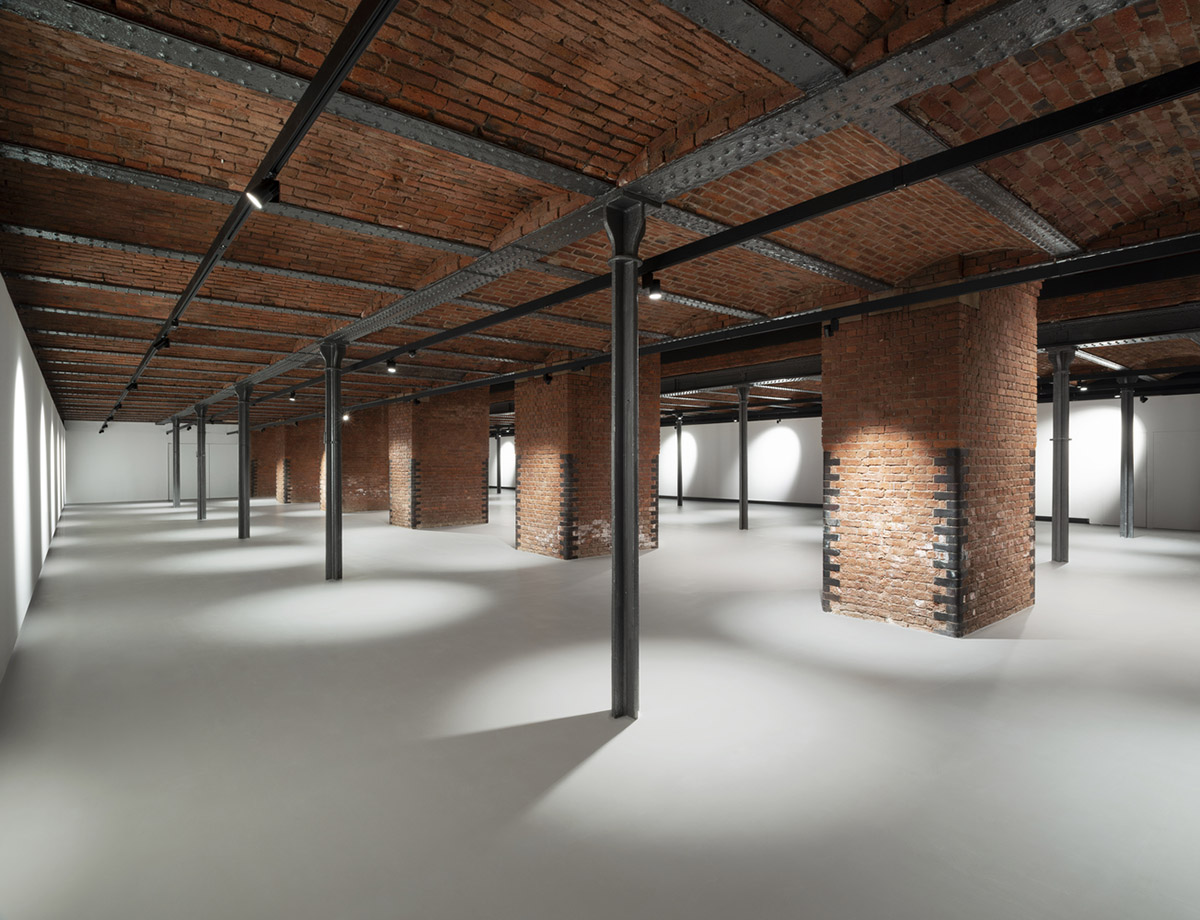
A new entrance is provided from the museum’s Lower Yard and restores the vaulted undercroft of the historic viaduct, also known as the “Pineapple Line” - because railway tracks run into the New Warehouse.
The new gallery space takes visitors into a bright and welcoming space, which clearly orientates visitors and provides an uplifting arrival.
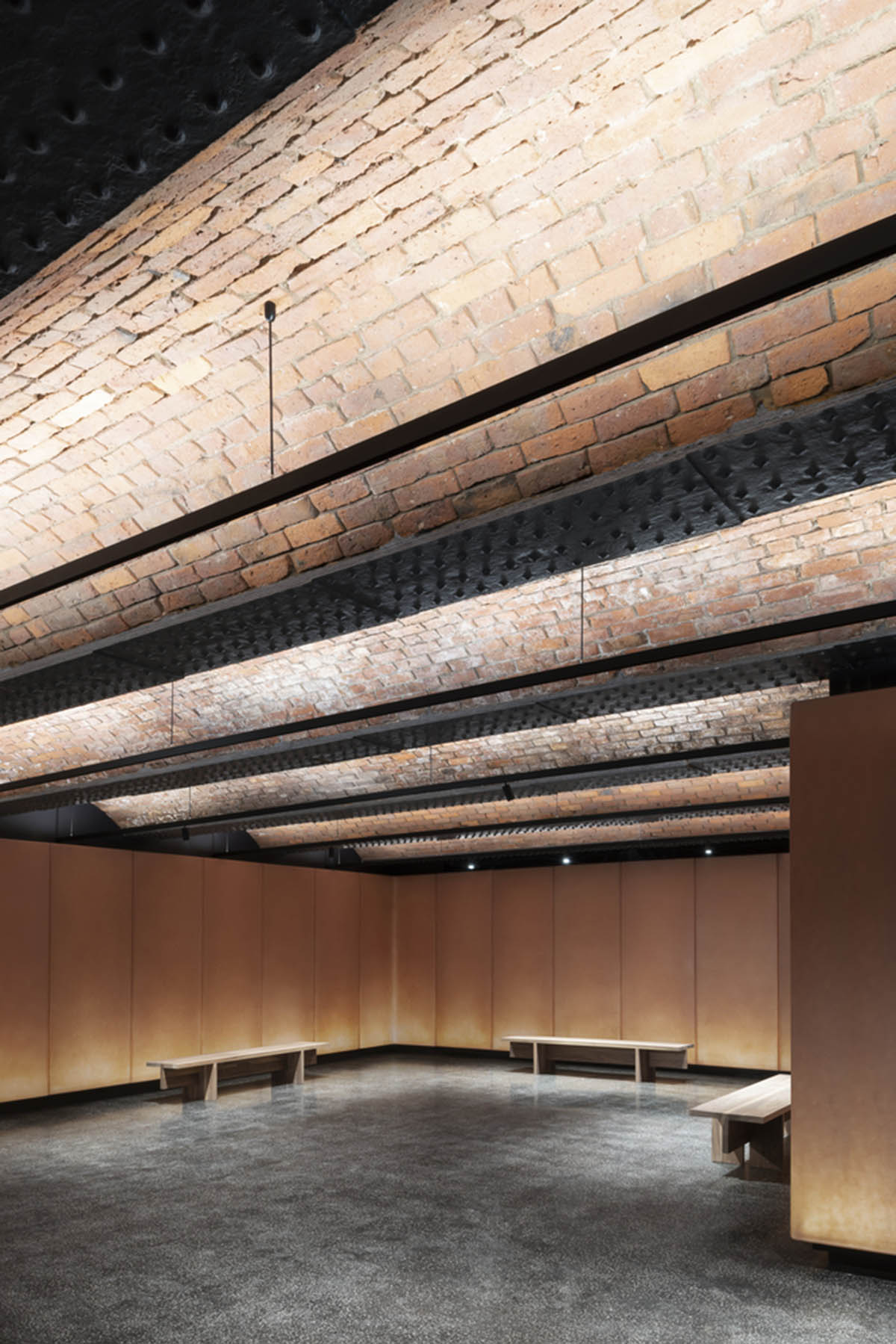
While the interior design carries the traces of the past, the architects used modern elements to elevate the space - a good choice of color palette also complements the overall language.
Upon entering, visitors feel the full-height of the space, while fibre-glass panelled walls transform the visitor welcome from outside to inside.
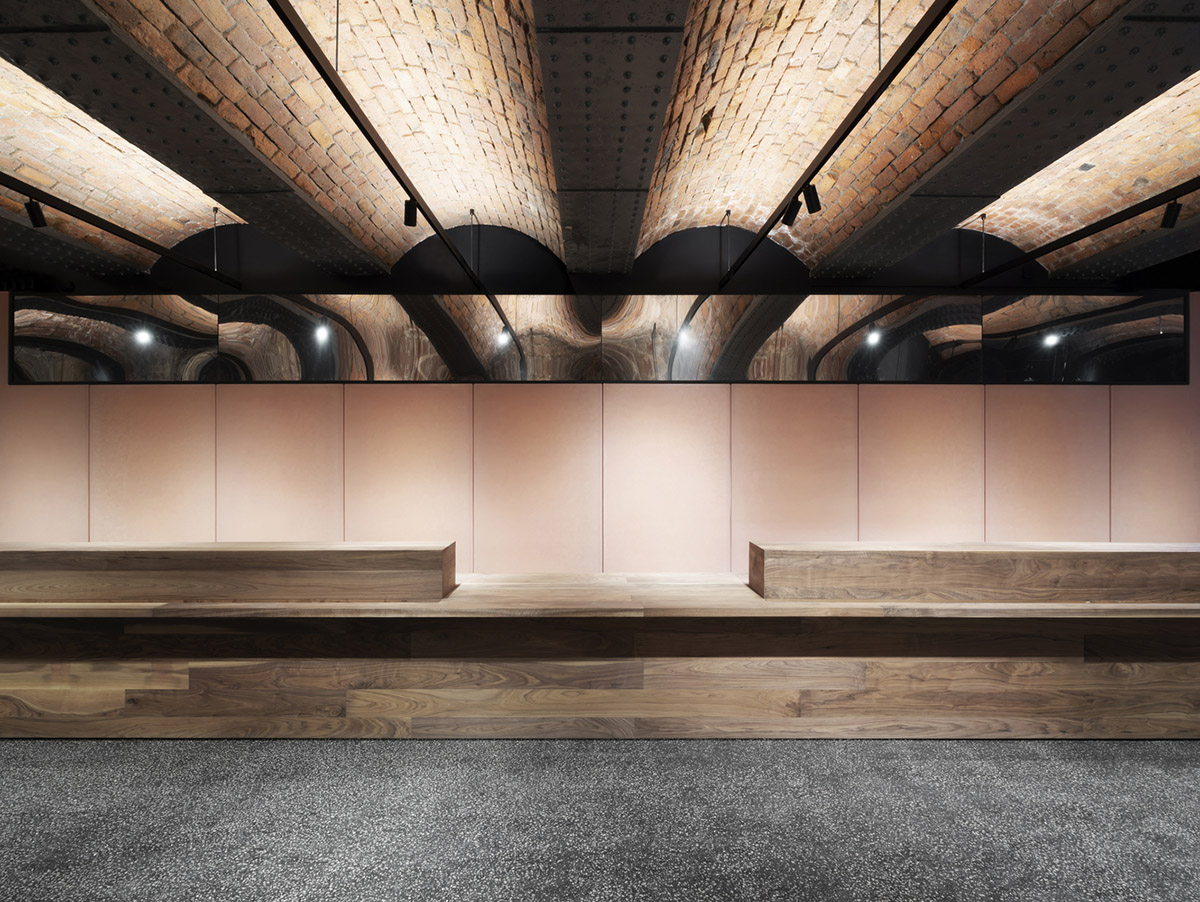
"This also alleviates the visual weight of the heavy Victorian structures overhead, which were designed to support the weight of goods wagons above, and concealing some of the ongoing maintenance works required for care the historic building fabric in perpetuity," added the studio.
The architects used hand-cast fibre-glass panel and tinted with a terracotta-hues to complement the historic language inside.
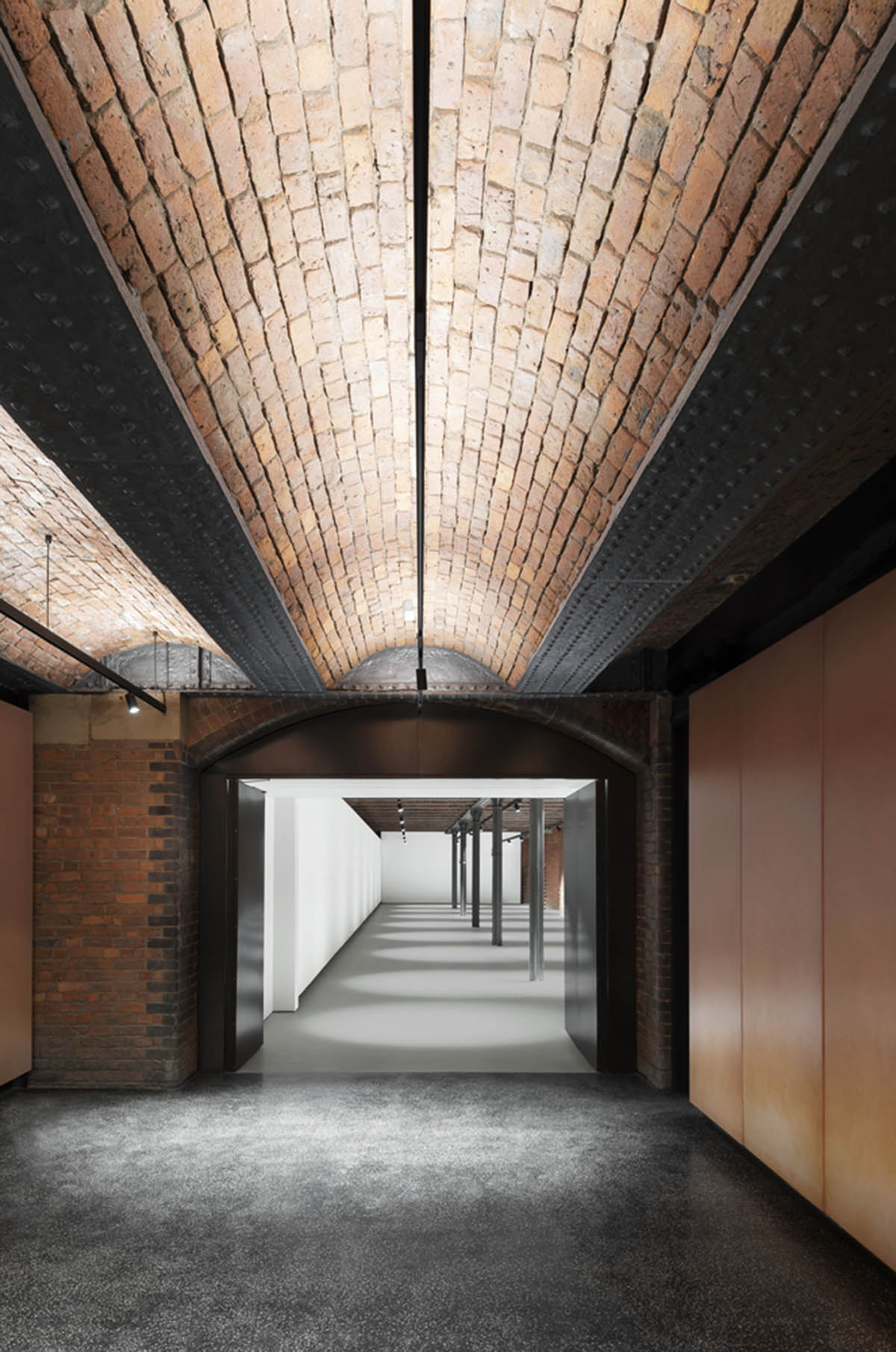
"Each new fibre-glass panel has been hand-cast and tinted with a terracotta-hue to complement the surrounding weathered Victorian brickwork," the architects continued.
In the interior, the panels are subtly back-lit, revealing the maker’s marks in their surface and to gently illuminate the spatial and decorative qualities of the historic cast-iron and brick jack-arch structures that form the railway infrastructure above.
An external ramped entrance provides access to entrance below the railway viaduct and it creates step free access for all visitors and assists with collections management. This space allows the museum to display larger collection items, with dedicated object preparation and handling facilities also being provided.
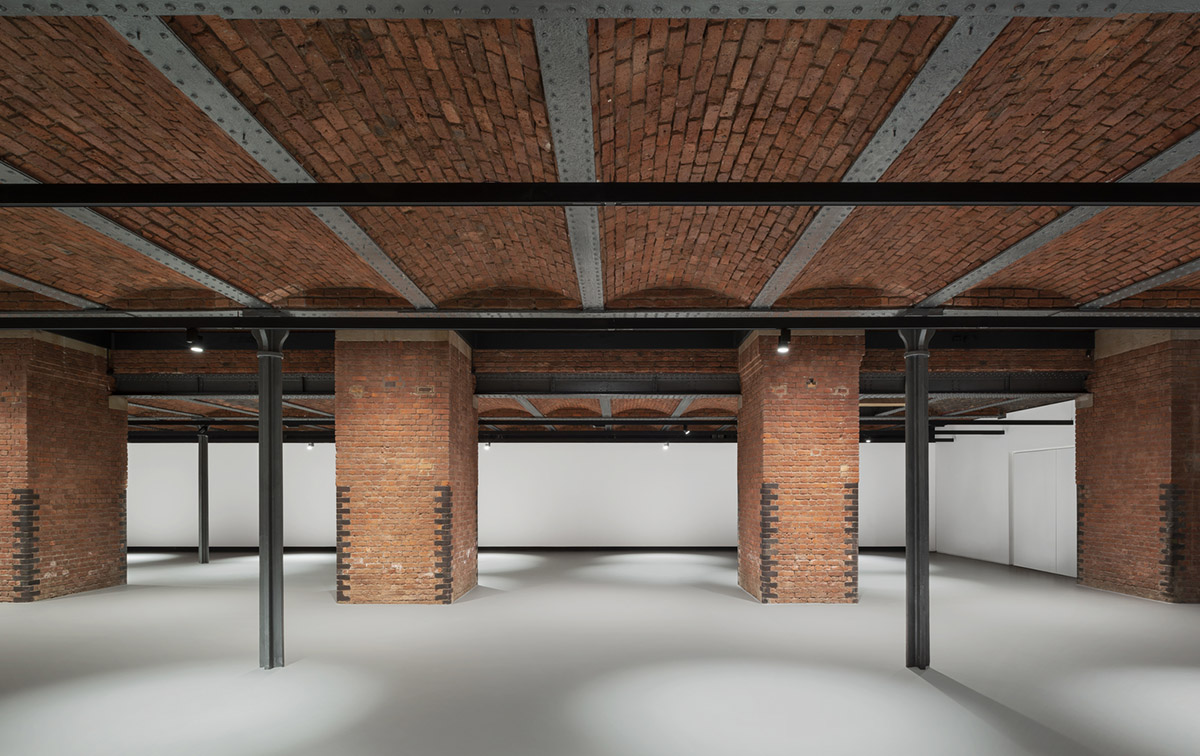
"The Lower Yard and the area below the ‘Pineapple Line’ viaduct will increasingly play a key role in the site-wide masterplan, with new connections and entrances between the Science and Industry Museum, The Factory and the developing St John’s and Castlefield neighbourhoods, as this part of the city is transformed," Carmody Groarke explained.
When visitors are inside, they meet the foyer that introduces visitor welcome functions and a large open-plan events space, which connects directly to the new Special Exhibitions Gallery.
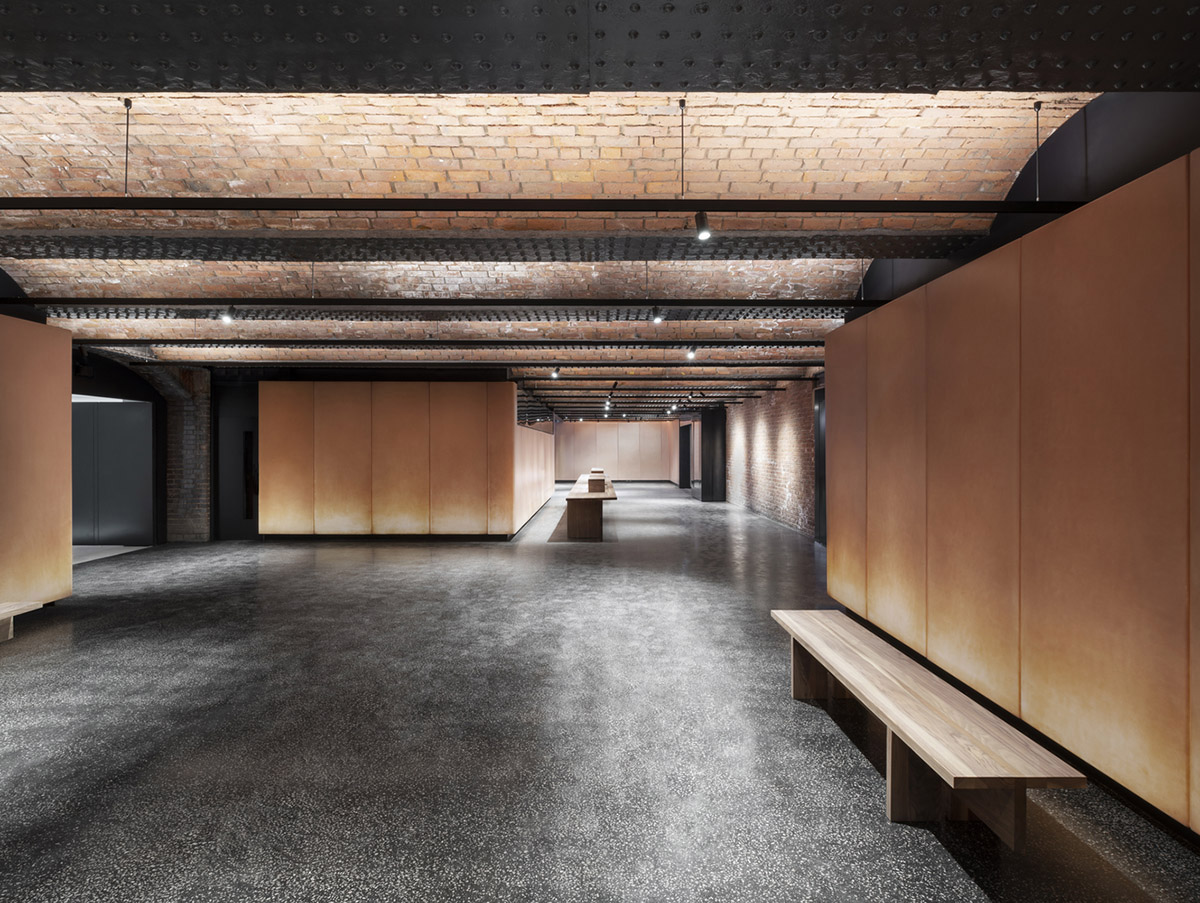
The architects added that "this new gallery exploits the size and character of the vast warehouse lower-ground floor with its composite cast-iron and brick structure and 5m-high vaulted ceilings, which follow the profile of historic railway lines and platforms above."
"The historic fabric throughout the gallery has been revealed and restored, to allow visitors to experience the grandeur and scale of the original warehouse space, whilst enjoying new exhibition experiences."
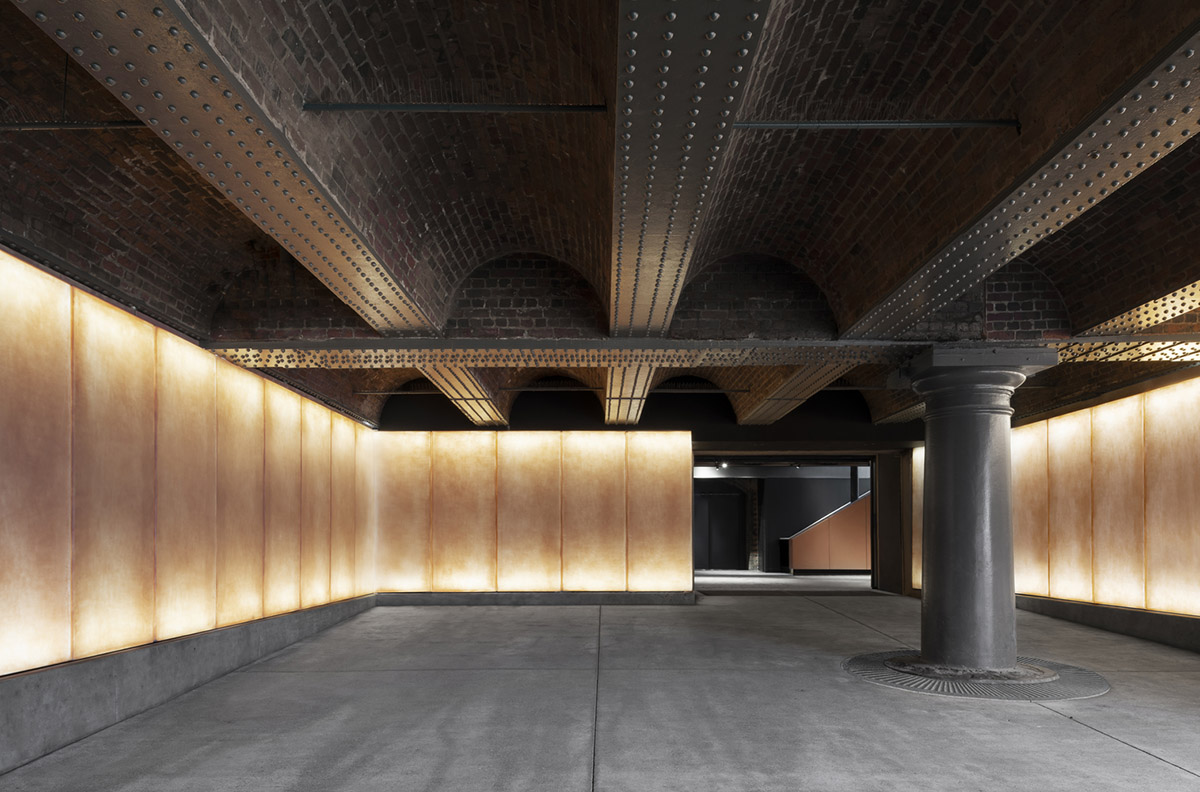
The architects elegantly and carefully designed the gallery in order to support the display of the museum’s collections, whilst also reducing the museum’s energy use.
Implementing passive environmental design strategies, they used passive design systems wherever possible to reduce life-cycle costing, save carbon and to reduce the visual impact on the exhibition environment.
For example, as the team highlight, new walls have been bolstered with hygroscopic mass to reduce need for dehumidification and low energy exhibition lighting has been used throughout.
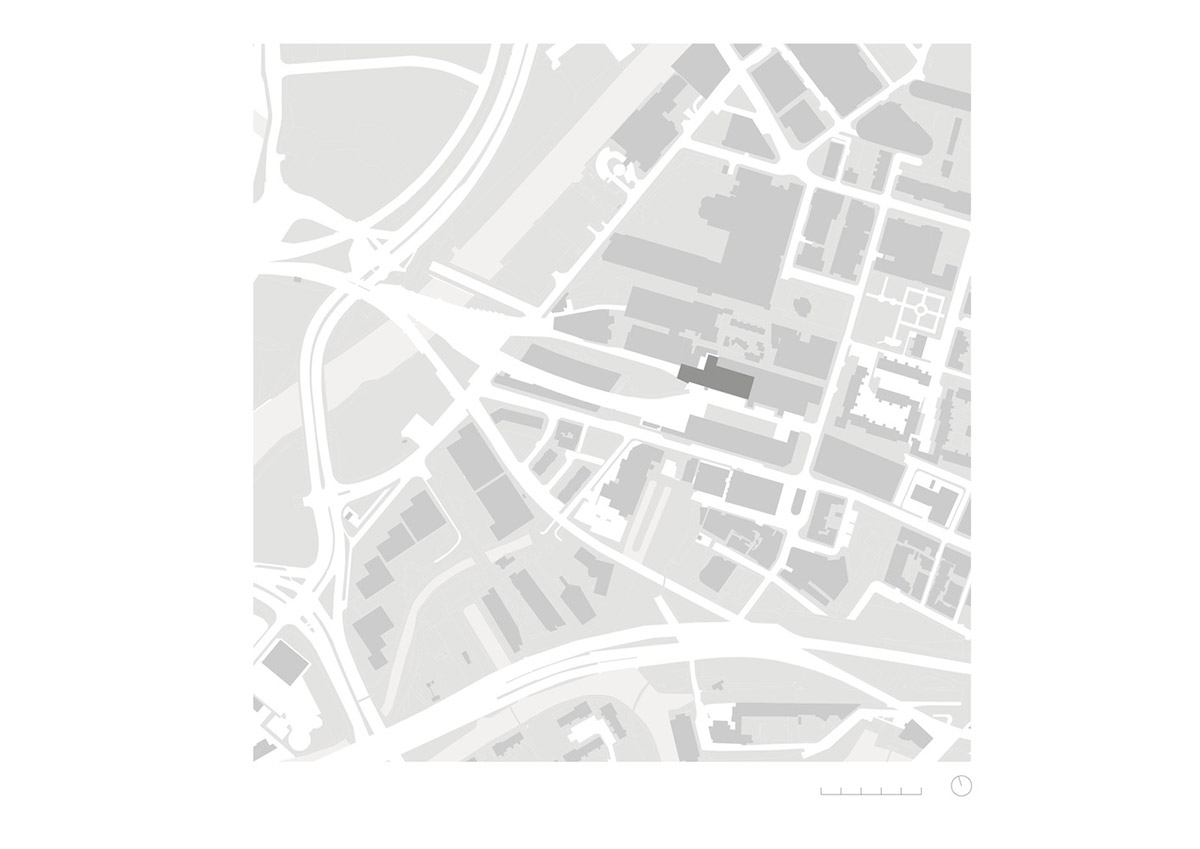
Location plan
The new Special Exhibitions Gallery is the first completed project in the Science and Industry Museum’s multi-million-pound masterplan.
The museum's masterplan will conserve and further open up its globally significant buildings and bring to life the story of the site and past, present, and future ideas that change the world.

Floor plan
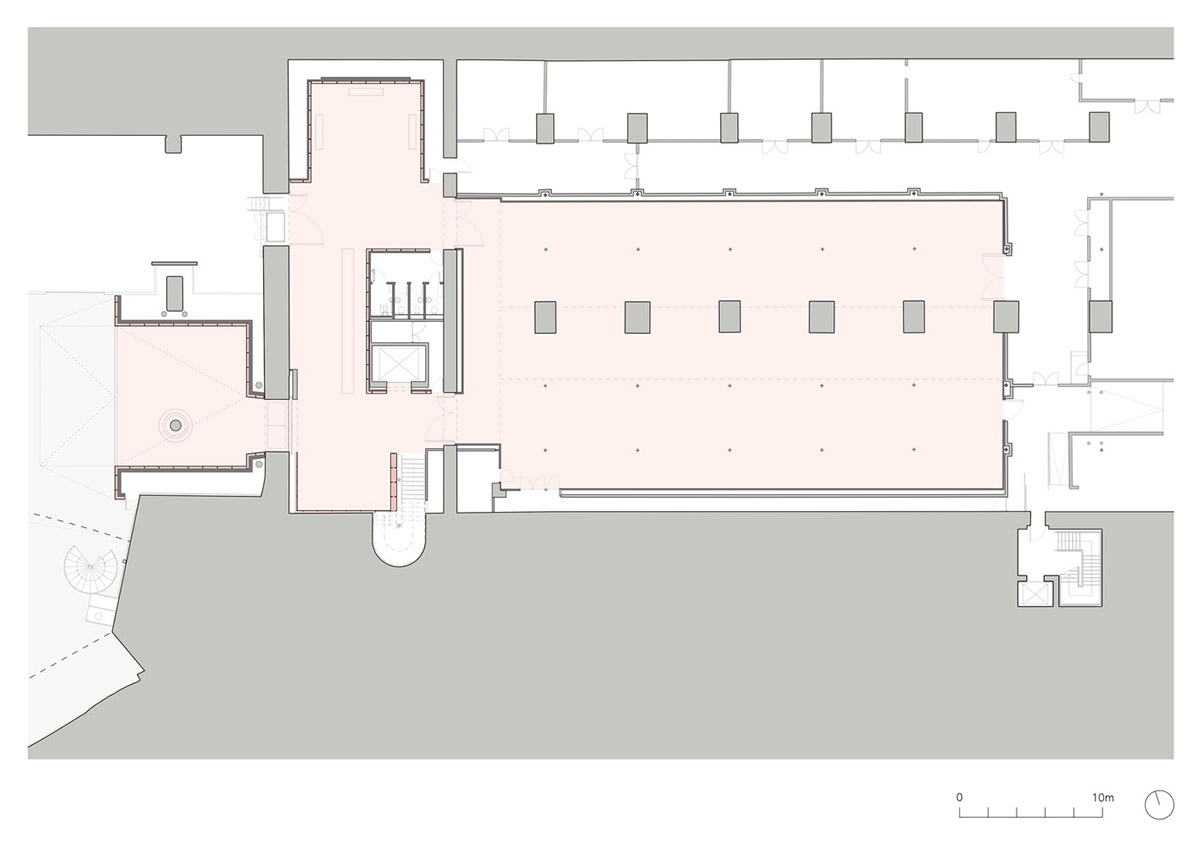
Floor plan

Section

Section
Carmody Groarke was founded by Kevin Carmody and Andy Groarke in 2006 in London. Carmody Groarke and Riehle+Assoziierte are currently working on plans to convert old brutalist offices into church in Nuremberg.
Carmody Groarke and TRANS Architectuur | Stedenbouw are designing a new extension of Design Museum Gent in Belgium.
Carmody Groarke previously enclosed Charles Rennie Mackintosh's the Hill House with a transparent structure.
Project facts
Project name: New Special Exhibitions Gallery
Architects: Carmody Groarke
Location: Manchester, United Kingdom
Size: 1,200m2
Date: 2021
Client: Science Museum Group
All images © Gilbert McCarragher
All drawings © Carmody Groarke
> via Carmody Groarke
